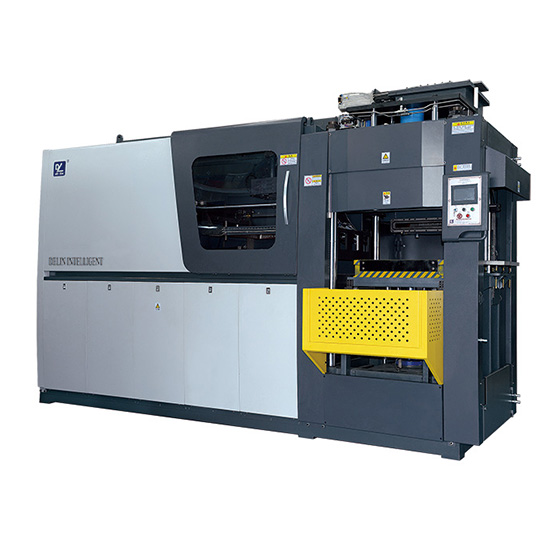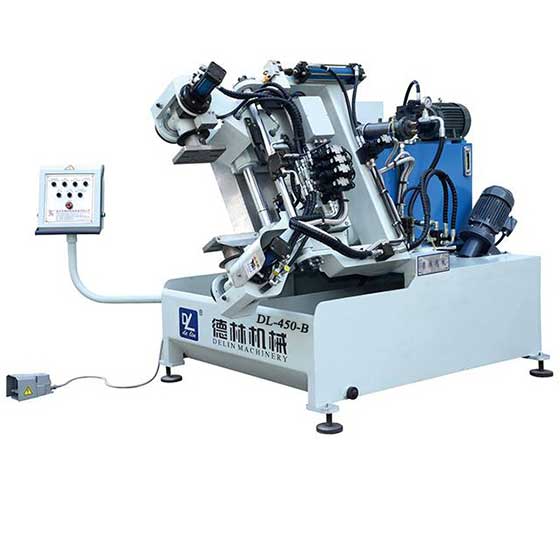What is the difference between the sand casting and metal casting?
Sand casting and metal casting are two different casting methods. Manufacturers need to understand their various advantages, disadvantages and applications in order to better play their role and improve production efficiency.
Sand casting, a casting method for producing castings in the sand.
Steel, iron and most non-ferrous alloy castings can be obtained by sand casting methods. Because the molding materials used in sand casting are cheap and easy to obtain, and the molds are easy to manufacture, they can adapt to single-piece production, batch production and mass production of castings. For a long time, it has been the basic process in casting production. Casting equipment using sand casting method is called a sand casting machine or sand molding machine.

1. Compared with other casting methods, sand casting has a lower cost, simple production process and short production cycle.
2. Because the molding materials used in sand casting are cheap and easy to obtain, and the molds are easy to manufacture, they can be adapted to single-piece production, batch production and mass production of castings.
The disadvantage of sand casting
The quality of molding sand and core sand directly affects the quality of castings. Poor quality of molding sand will cause defects such as pores, sand holes, and sticking, and sand inclusions in castings.
Sand casting has a wide range of adaptability, small pieces, large pieces, simple pieces, complex pieces, single pieces and large quantities that can be used. Sand molds have higher refractoriness than metal molds, so materials with higher melting points such as copper alloys and ferrous metals also use this process.
The mold used for sand casting is generally made of wood and is commonly called wooden mold. In order to improve the high dimensional accuracy, aluminum alloy molds or resin molds with long service life are often used. Although the price has increased, it is still much cheaper than the mold for metal casting. In the production of small batches and large parts, the price advantage is particularly prominent.
Metal casting is also called hard mold casting. It is a casting method in which liquid metal is poured into metal molds to obtain castings.
The mold is made of metal and can be used repeatedly (hundreds to thousands of times). The castings that can be produced by metal mold casting currently have certain restrictions in terms of weight and shape. For example, ferrous metals can only be castings with simple shapes; the weight of the castings should not be too large; the wall thickness is also limited, and the smaller casting wall thick can not be cast. Casting equipment using a metal casting method is called a metal casting machine or gravity casting machine.

Metal to casting and sand casting comparison: There are many advantages in technology and economy.
(1) The mechanical properties of metal castings are higher than sand castings. For the same alloy, its tensile strength can be increased by an average of 25%, and its yield strength can be increased by an average of about 20%, and its corrosion resistance and hardness are also significantly improved;
(2) The accuracy and surface finish of castings are higher than sand castings, and the quality and size are stable;
(3) The process yield of castings is high and the consumption of the liquid metal is reduced, generally saving 15-30%;
(4) Without sand or using less sand, it can generally save 80-100% of modeling materials; in addition, the production efficiency of metal mold casting is high; the causes of defects in castings are reduced; the process is simple, and it is easy to realize mechanization and automation.
Although metal casting has many advantages, it also has disadvantages. Such as:
(1) The manufacturing cost of metal molds is high;
(2) The metal type is air-tight and non-recessive, and it is easy to produce defects such as cracks and deformation during solidification;
(3) In metal mold casting, the working temperature of the mold, the pouring temperature and the pouring speed of the alloy, the residence time of the casting in the mold, and the paint used, etc., are very sensitive to the quality of the casting and need to be strictly controlled.
Therefore, when deciding to use metal casting, the following factors must be considered:
1. The shape and weight of the casting must be appropriate;
2. There must be sufficient batches and a deadline for completing the production tasks.
3. Long manufacturing cycle and high cost, not suitable for single piece and small batch production;
4. Not suitable for casting with complex shapes (especially the inner cavity), thin-walled and large castings. The mold cost is more expensive than sand molds and cheaper than die casting
5. The metal mold is limited by the size of the mold material, the cavity processing equipment, and the ability of the casting equipment, so the metal mold is not suitable for the production of particularly large castings.
Delin Machinery specializes in the production of the sand casting machine and metal casting machine. It is a machinery manufacturing enterprise integrating scientific research, design, manufacturing, installation, debugging and consulting services.
You can click here to view more machine product introduction
Machine working video:
- DL-3040 automatic horizontal sand molding machine working video
- gravity casting machine working process
Welcome to Call / WhatsApp or send us Email about any question on the horizontal sand molding machine, please contact us >>>Tel / WhatsApp / WeChat: +86 13960339790, Email: salse16@chinamakeco.com
